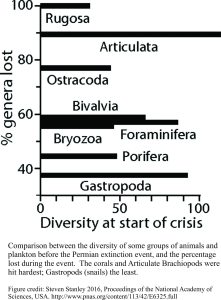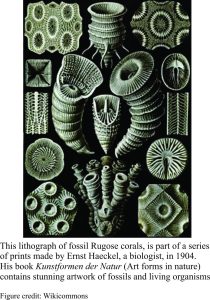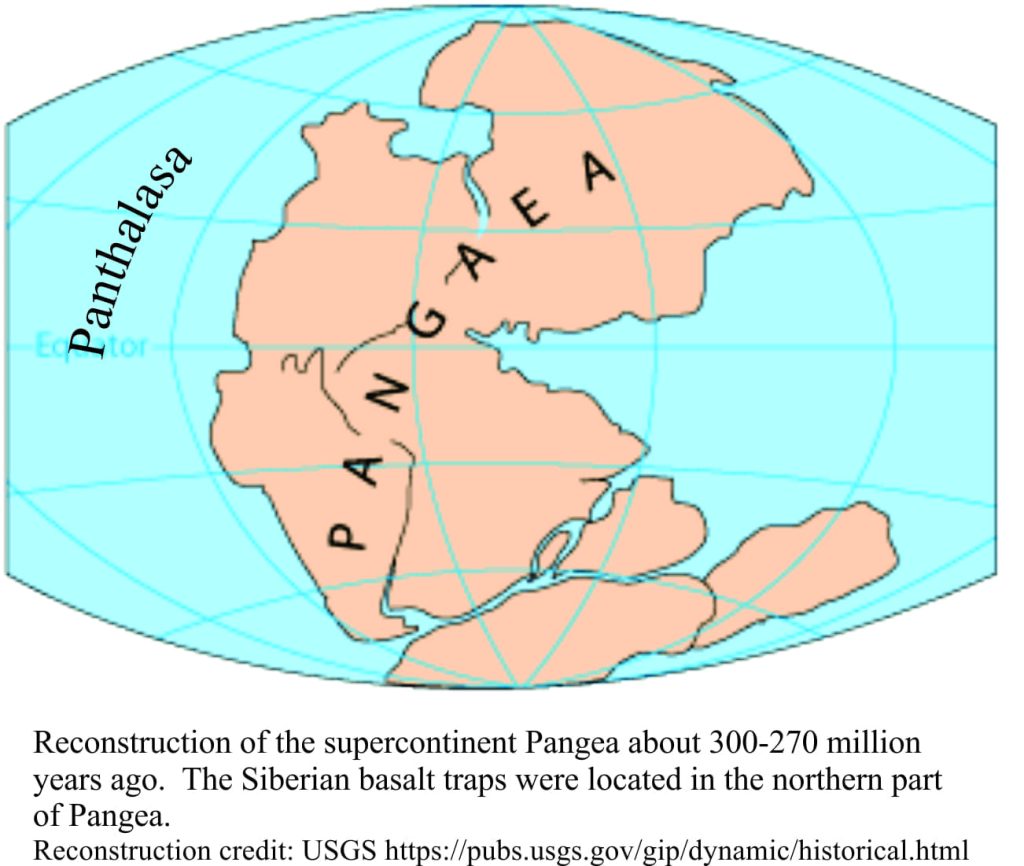The great end of Permian extinction
It seems that global catastrophes and the ensuing mass extinction of all manner of life-forms, asteroid impacts and Dinosaurs immediately come to mind, were made for Popular Science. Even Hollywood is in on the act. Perhaps it’s because, in the telling, they appeal to some innate sense of nihilism, a bit like the existential threats that politicians trot out from time to time.
A recent scientific paper by Steven Stanley published by the US National Academy of Sciences, provides some good news on this score; past estimates of life forms snuffed out by such global events, have been exaggerated. Stanley’s reassessment accounts for the fact that extinctions are taking place all the time, in the background, and that these individual, long-term biotic events need to be subtracted from the total species loss resulting from some catastrophe. For example, in the normal course of evolution, species are continually evolving and in doing so may create environmental pressures within their niche wherein other species are unable to compete; they may be eaten, or their food source disappears. They gradually die off. We certainly know this to be the case in our modern world, where human-caused extinctions are legion. A case in point is the extinction event at the end of the Permian period (299-252 million years ago), morbidly referred to as the Great Dying. Up to 96% of species were deemed to have disappeared, which also means that there were not a lot left to carry on the evolutionary journey towards the modern world. Stanley’s estimates, taking background extinctions into account, now put this at 81% – still catastrophic, but not as bad as we once thought.
The (not so) Great Dying
 Geological Periods are intervals of time past, for which we now have a record measured in rocks. The beginning or end of a period is commonly defined by abrupt changes in fossils – we don’t need to know what caused these abrupt changes in life forms, only that such changes occurred. Two well-known examples are the Cambrian (beginning 542 million years ago) where complex, multicellular animals with preservable hard parts (skeletons, shells) first appear. The end of the Cretaceous Period marks the demise of dinosaurs, although it seems the dinos were already in decline – the asteroid impact merely hastened their demise.
Geological Periods are intervals of time past, for which we now have a record measured in rocks. The beginning or end of a period is commonly defined by abrupt changes in fossils – we don’t need to know what caused these abrupt changes in life forms, only that such changes occurred. Two well-known examples are the Cambrian (beginning 542 million years ago) where complex, multicellular animals with preservable hard parts (skeletons, shells) first appear. The end of the Cretaceous Period marks the demise of dinosaurs, although it seems the dinos were already in decline – the asteroid impact merely hastened their demise.
The Permian is also marked by a huge, and apparently abrupt loss of species, some groups lost forever. The Great Dying was probably one of the most catastrophic extinction events ever recorded, greater even than the aftermath of the asteroid that plummeted to earth 65 million years ago. Rugose corals disappeared altogether (image of some examples at the top of the page); 50-60% of plankton, and 60% of bivalve species became extinct. Clearly some species survived and continued to evolve, otherwise we would not today enjoy bouillabaisse or clam chowder.
Suffocation or acid indigestion?
Illuminating the possible causes for this event has produced some interesting, even creative explanations; asteroid impact, widespread volcanism, acid rain and acidic oceans, air and sea temperature increases, algal blooms, plate tectonic assembly of a supercontinent, climate change, and even a supernova. In many respects all (except the supernova) may be related. Back in the Permian, the distribution of continents and oceans looked nothing like it does today. By about 300-270 million years ago, two very large continental blocks, Gondwana and Laurasia, had combined to form the supercontinent Pangea (or Pangaea). Pangea was surrounded by the global ocean Panthalasa. The supercontinent began to break apart about 200 million years ago (here is a USGS animation of this process).
The end of the Permian is marked by another remarkable event. Humungous volumes of basalt were erupted over (what is now) the Siberian Platform – the Siberian Traps. At least 3 million km3 of lava were erupted. Putting this number in context, Mt St Helens produced about 1 km3 of lava during the 1980 eruption; the entire island of Kilauea (Hawaii) is about 25,000-30,000 km3. The Siberian eruptions lasted about 800,000 years. One of the by-products of volcanic eruptions is the release of gases, mostly water vapour, but also carbon dioxide (CO2) and sulphur dioxide (SO2). The volume of CO2 released to the atmosphere over such an extended period of time must have been huge. Both the eruptions and evolution of CO2 are currently regarded as a likely cause of the mass extinction.
Addition of so much CO2 into the air has a number of consequences. Many species of land-based plants don’t do so well , especially in more acidic rain. Carbon dioxide also dissolves easily and rapidly in sea water, and at some point in this process, the buffering capacity of sea water (namely its ability to prevent runaway changes in acidity or alkalinity) is over come and the pH decreases (acidity increases) to the point where many animals and plants find it difficult to eke out a living.
However, certain algae can thrive in such conditions; algal blooms tend to remove oxygen from water, exacerbating already intolerable living conditions for most other species. One hypothesis, proposed in 2013, involves microbes that metabolize carbon in the oceans, turning it into methane; the authors in this paper argue that it was bursts of methane, not CO2, that created greenhouse gas conditions and effectively poisoned the atmosphere.
Is there a disconnect between the timing of extinction and these hypotheses?
Precise dating of zircon crystals in beds of sedimentary rock that straddle the extinction event, indicate that it may have taken place extremely rapidly; no more than 60,000 years that, in geological terms, is really fast. The results of this study by Seth Burgess and colleagues were published in 2014 (Open Access). There is also evidence, cited in this paper, that changes to the carbon cycle were already underway when the extinction began, including possible ocean acidification and increased temperatures. However, the Siberian Trap eruptions lasted some 800,000 years. Were the basalt eruptions solely responsible for the extinction; was there a particularly vigorous period of eruption within the 800,000 years that helped trigger the mass die-off? Another proposal, that an asteroid impact may also have played a role, has not been entirely put to bed. The authors of a 2001 publication claim to have detected extraterrestrial helium and argon (i.e. the kind found in meteorites) in carbon crystals (fullerenes). However, there appears to be some dispute over this discovery, and the existence of such an impact is still poorly verified.
Postscript
The terminal Permian extinction continues to hold fascination for scientists of all stripes. This fascination extends beyond the event itself; clearly there was recovery of biota. Perhaps this attests to the power of evolutionary processes, when in a single event more than 80% of species are eradicated, but we end up with the remarkable diversity of life in our modern world (interrupted by at least one more bolide). Best we look after it all.



















